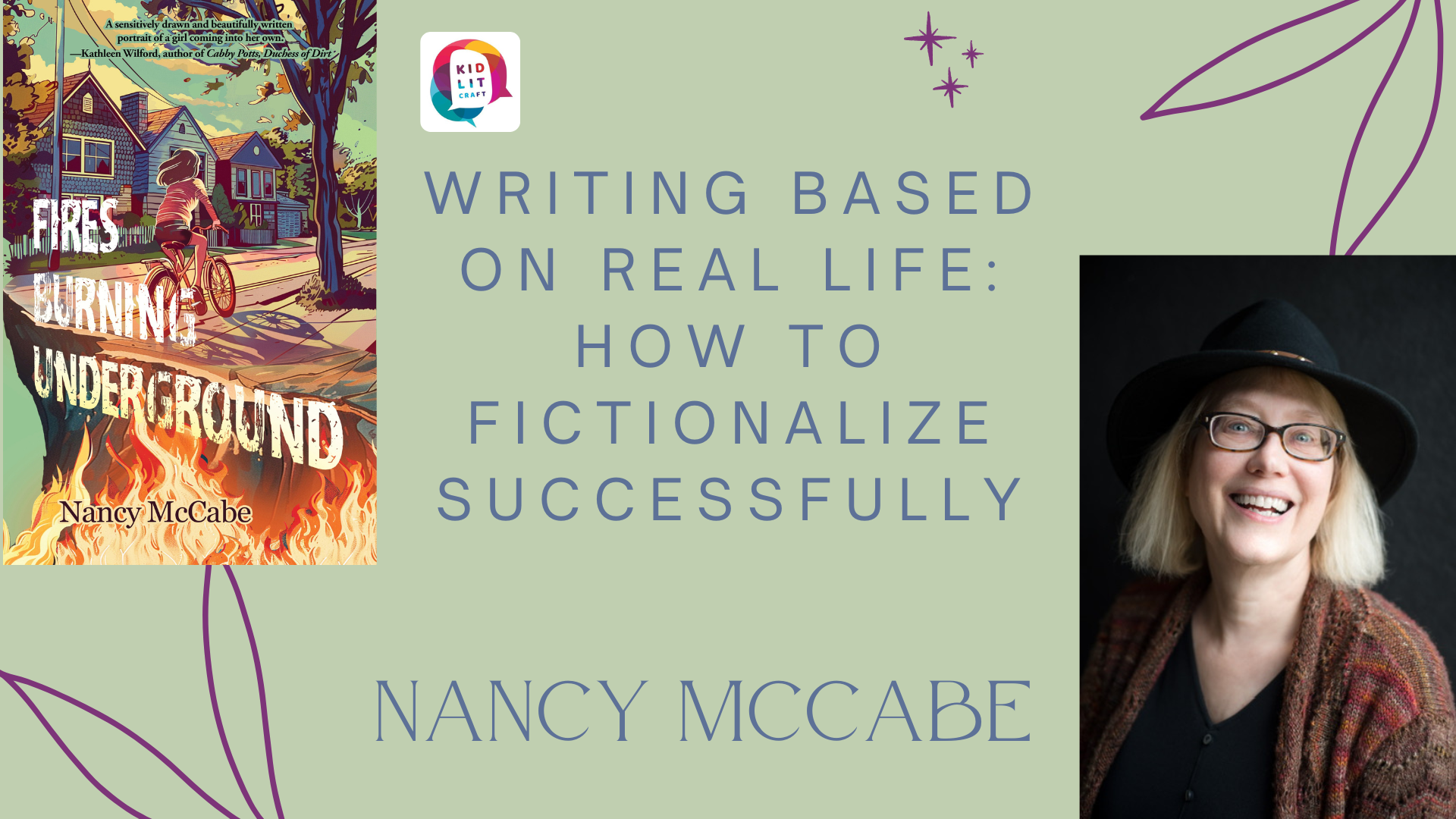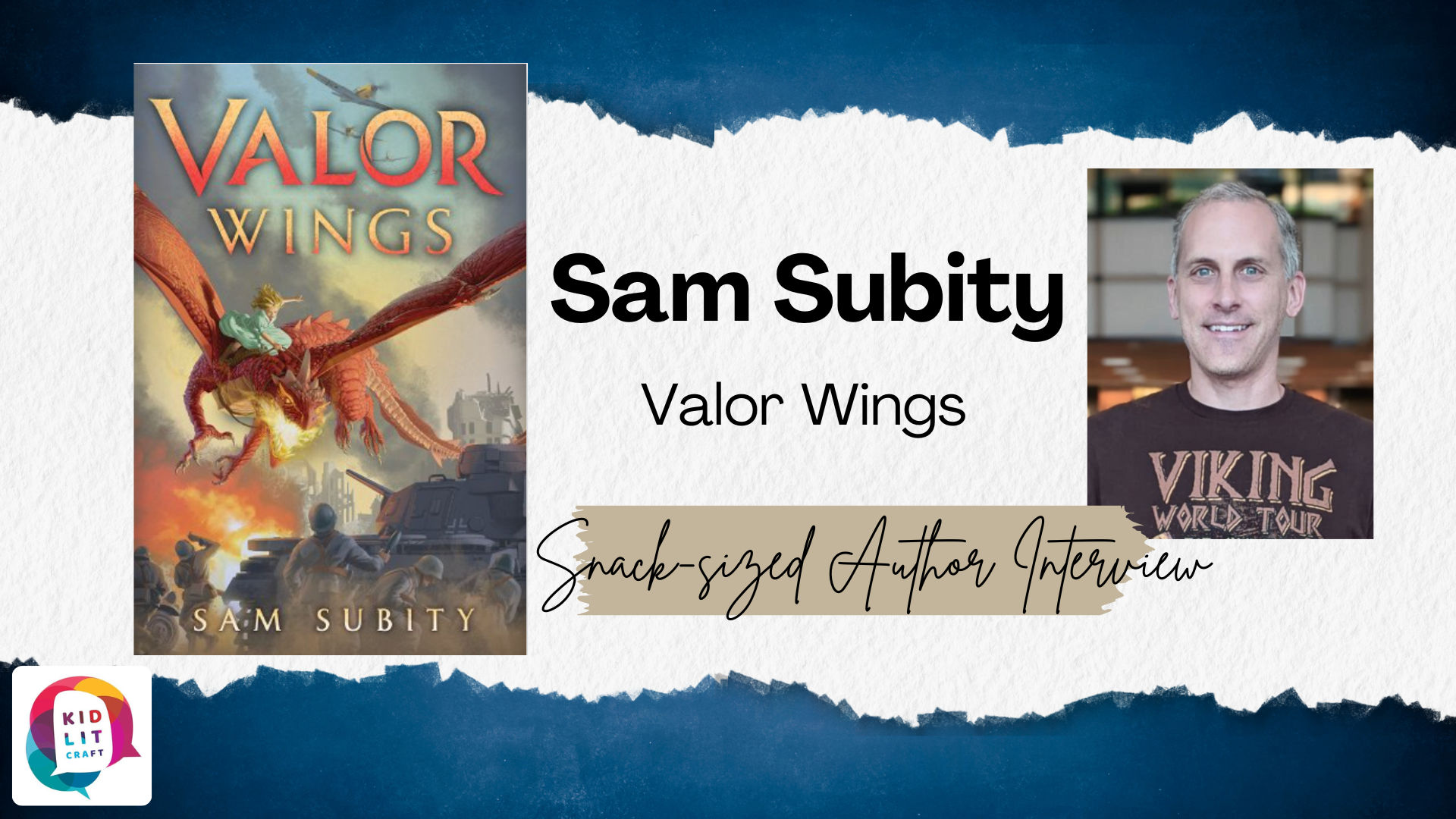Building Engaging Stories Through Conflict and Tension: Something to Say by Lisa Moore Ramée
by Kristi Wright
In her sophomore novel, Something to Say, Lisa Moore Ramée once again proves herself adept at crafting a nuanced and engaging story with unforgettable characters who must navigate a contentious community issue. One way Ramée builds such engaging stories is through her use of conflict and tension.

Conflict arises when your main character must confront another character, a situation, or their worst foe of all--themself. Tension is what mounts in your main character and your reader as they feel the looming threat of conflict. If you only give your readers one conflict after another without tension in between, you are in danger of exhausting, and maybe even boring them, to the point that they lose interest. Tension turns the page.
In Anne-Marie Strohman’s recent post, she analyzes how well-seeded story questions create forward momentum in books. In this related post,Tim Storm talks about how urgent story questions can be used effectively. The more urgent your story questions, the more tension your readers will feel.
Ramee’s Something to Say has a variety of conflicting forces that seed story questions. Then she allows those opposing forces to simmer and escalate, thus creating tension and page turns.
Something to Say tells the story of Jenae, a girl who is both introspective and anxious. She tells herself that she doesn’t just want to be left alone, she likes it. That she’s unique and doesn’t need to fit in. That she doesn’t need friends the way some people do. Of course, we readers understand that Jenae probably needs friends more than she admits.
When I think about the story structure of Something to Say, I’m reminded of baking a cake, where you mix all the dry ingredients in one bowl and all the wet ingredients in another and then fold them together to make something delicious. There are two significant threads in Ramée’s story that come together later in the book. In this post, we’ll look at each of these separately from a conflict/tension perspective. I highly recommend reading the novel to find out how they come together!
Jenae’s Strong Misbelief
In the beginning of the novel, we learn that Jenae’s brother was seriously injured, and she thinks it’s all her fault. Immediately, readers want to know: What happened to Jenae’s brother? Why does Jenae think it’s her fault? Strohman identifies these as “wondering” questions. They don’t necessarily drive the whole story, but they do pique a reader’s interest and create tension.
Soon, we find out that Jenae has a strong misbelief that drives her thinking about the world and herself. She believes she has a superpower where she controls people with her mind, causing them to break. Reader tension over Jenae’s internal conflict forms two overarching questions that will drive the story: Will Jenae finally realize that she doesn’t have this superpower? And will Jenae finally forgive herself?
We are introduced to Jenae’s misbelief through her guilt over her brother Malcom, who she believes was injured playing basketball because she wished he would come home again.
I know it sounds ridiculous to say I can control people with my mind, and I wouldn’t believe it either if I hadn’t seen it happen. Twice. The first time, I was only five years old, so I couldn’t be sure, but the second time--when I hurt Malcom--I knew for certain what I could do. (20)
As we get to know Jenae, we discover that her misbelief took root years ago when her dad left her and her mom. Her guilt over her father abandoning them is, in fact, what caused her to become introverted and anxious in the first place. This backstory heightens tension because the reader now sees that it’s going to take a lot for Jenae to overcome her misbelief.
Their fights made our house feel wrong. Like it had a bad attitude. One night it got so bad, I aimed one thought at my dad as hard as I could. Telling him, JUST GO. And he did. At first, Mama seemed happy, and I thought I had done a good thing. But then she got so sad. With one thought, I made my dad leave and broke Mama’s heart. And I couldn’t take it back. No matter how much I begged the universe. All I could do was become as small and quiet as I could be and try as hard as I could not to make anything else bad happen. But I did anyway. (141)
Close to the midpoint, Jenae’s guilt soars when she believes her grandfather’s stroke is her fault.
Mama yells at Malcom to go back inside, but he ignores her. Gee looks at Malcolm, and then at Mama, and then up at the gun he’s still holding above his head. His hand lowers, and with all my might I think, STOP!
And Gee crumples to the ground.
As soon as the ambulance leaves with Gee, I glide upstairs, quiet as a cloud. I go into my room and sit on my bed and rock back and forth.
I did it again.
Hurt someone without meaning to. (128-129)
While readers have two distinct questions when it comes to this thread (Will Jenae finally realize that she doesn’t have this superpower? And will Jenae finally forgive herself?), they might jumble them into one, assuming that once Jenae realizes she doesn’t have this superpower, she will forgive herself. But Ramée chooses an unusual resolution for this thread that requires these questions to be unpacked.
Jenae’s Terror Over Speaking in Public
In another important thread, Ramée introduces Aubrey, a new classmate who is as boisterous as Jenae is introverted. And she makes him desperate to be Jenae’s new best friend. As the two grow their budding relationship, Ramée ups the conflict and tension by:
Making it clear that Jenae is terrified of public speaking whereas Aubrey loves it.
Putting them in the same English class, one where the teacher emphasizes public speaking.
Introducing a hot community debate over the name of the junior high school, which is currently John Wayne Junior High. Since John Wayne embraced white supremacist beliefs, activists are fighting to change the name to Sylvia Mendez, whose bravery ensured that all children had equal education opportunities in California.
Introducing a class assignment where two students must partner up to debate a subject, with the two best seventh grade debaters being awarded the opportunity to join the eighth grade debate team.
Partnering Jenae and Aubrey together for the debate with Aubrey determined to win one of the spots on the debate team, and having them decide to mirror the community debate by picking the same topic.
Having Jenae actively scheme to stay home sick from the debate.
In this thread, readers once again form two driving questions that keep them reading: Will Jenae find the courage to participate in the debate with Aubrey? Will the school’s name change? Ramée weaves in person-to-person conflict between Jenae and Aubrey as they work through their opposing wishes with regards to the debate, internal conflict as Jenae struggles with her fear of public speaking, and situational conflict due to the school name controversy. All of this conflict leads to tension for readers as they worry about the story questions.
A lot of the tension in this thread is derived from Jenae’s scheme (which she calls “the bad plan”) to get out of debating Aubrey.
This plan is foul for sure. I’ll be harming Aubrey by not showing up. And if Mama finds out, she’ll be so disappointed and angry. Plus she’s sure to punish me, and that’s harm to me. But facing a whole room full of people who are staring at me, and judging me and seeing how I don’t know anything and can’t get my mouth to cooperate? Standing in a puddle of sweat so big it will probably drown me? And my sweat stinking up the whole place? That’s harm too. I can’t give the speech. My dad has to get me out of it.
Before I can change my mind, I quickly type a message to my dad letting him know I need a favor.
I’ve set the groundwork, and it makes me feel frozen inside. (182)
As soon Jenae reveals her plan, we anticipate what it’s going to do to Aubrey. Through an ebb and flow of both charming and argumentative moments between Jenae and Aubrey, Ramée builds their friendship into something that matters, growing the stakes, which makes us worry even more about the outcome.
Cleverly, she uses their arguments (person-to-person conflict) to reveal deeply personal information that grows their intimacy. For example, when Aubrey finally admits that he lied about all the friends he had when he lived in Chicago, their interchange starts out as an argument, but ends with them having a deeper understanding of each other, which feeds the stakes.
“I was sick a lot,” he says. “With the leukemia and everything, and so that’s why I was homeschooled.”
That makes me turn around. “But kids who are homeschooled still do stuff and have activi--”
“It wasn’t like that for me. My mom was nervous about me catching somebody’s cold or whatever. It could’ve been dangerous to get sick like that while I was having cancer treatments....but she took it too far. She didn’t let me go to anyone’s house, or go to group activities, or let anyone come over. She… was scared.”
Even though it sounds like Aubrey is standing up for his mom, he sounds angry at her.
“You could’ve told me all that,” I say.
“Everyone thinks it’s weird, that I’m weird, if I say I didn’t go to regular school. And that I didn’t have...”
He doesn’t finish his sentence, but I can guess he was going to say that he didn’t have friends. And now I feel bad for making him have to admit it. My frozen edges begin to thaw. (196)
Now Jenae knows exactly how awful it will be for Aubrey to have her, the first friend he’s had in a really long time, betray him. Tension for Jenae translates to tension for the readers.
In resolving this thread, Ramée doesn’t take the most obvious path for Jenae, but she does provide a satisfying one. Once again, I encourage you to read the novel to find out what happens!
Now It’s Your Turn
Consider your current writing project. Think about how you can seed it with conflict that blooms into the kind of tension and story questions that will drive your readers to turn those pages.
Look for varying types of conflict, especially inner conflict and situational conflict, both of which have the potential to spawn overarching story questions.
Look at your story from your reader’s perspective. What urgent questions might they have based on the conflict you’ve seeded. Do you think these questions are enough to drive the story forward?
Think about what scenes you might add to drive your readers to anticipate more conflict. Remember that tension comes from that looming threat of conflict, not from the conflict itself.
This blog from Bridget McNulty is a nice follow up discussion on tension and this podcast provides an excellent analysis of the different types of conflict you can infuse into your writing.




